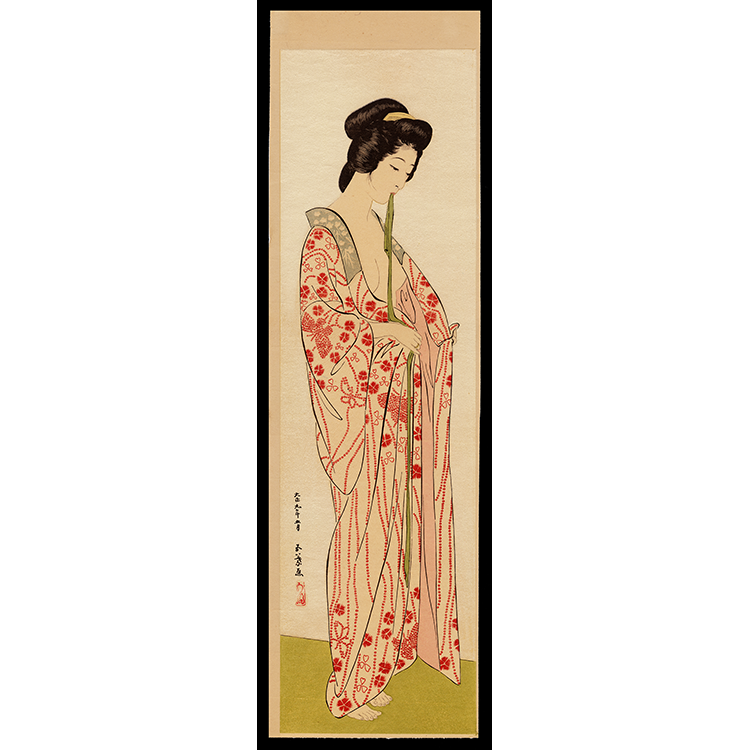GOYO
COLLECTING JAPANESE PRINTS FEATURED SHIN HANGA ARTISTHashiguchi Goyo
1880 - 1921
Profile at a Glance:
Among the first Shin Hanga artists
Admirer of Ukiyo-e, particularly the Bijin-ga designs of Utamaro
Worked for Watanabe Shozaburo for one pre-earthquake design
Unhappy with his collaboration with Watanabe, Goyo produced a self-directed series of woodblock print designs which included landscapes and beauties
The son of a shijo-style painter and former samurai, Hashiguchi (Kiyoshi) Goyo was a pioneering Shin Hanga artist, nihonga and yōga-style painter, and graphic illustrator born in Kagoshima Prefecture in 1880.
Hashiguchi first began studying kanō-style painting techniques at the age of ten and was soon encouraged by his father to study Japanese-style painting under the Hashimoto Gahō in Tokyo. However, Hashiguchi soon shifted focus to study Western-style painting under Kuroda Seiki at the Tokyo School of Fine Arts, graduating in 1905.
Upon completing his studies, Hashiguchi began doing graphic illustrations for author Natsume Soseki's novel I Am a Cat. It was soon followed by additional designs for the authors Futabatei Shimei, Uchida Roan, Morita Sohei, Tanizaki Jun'ichiro, Nagai Kafu, and Izumi Kyoka. In conjunction with novel illustrations and cover design, Hashiguchi continued to work in oils. He won recognition for several paintings displayed at the first Bunten exhibition in 1907 but was disappointed by public acceptance of his works at later shows.
After that, Hashiguchi transitioned to the ukiyo-e genre after winning recognition for a poster he designed for the Mitsukoshi department store in 1911. He went on to contribute scholarly articles to the periodicals Art News and Ukiyo-e. At the request of publisher Watanabe Shozaburo, Hashiguchi designed the very first Shin Hanga print, entitled Yuami, in 1915.
Shin Hanga was intended to replicate earlier ukiyo-e prints of the Edo period, and Hashiguchi's artistic talent and background were exactly what Watanabe was seeking. He wished to enlist Hashiguchi's services. However, the two men were diametrically opposed in terms of production style; Watanabe wanted to dictate the creative process, while Hashiguchi wished for artistic autonomy. Unable to reach a consensus, the two parted ways the following year.
From 1916 to 1917, Hashiguchi worked alone as a supervisor for the reproduction of the twelve-volume series Japanese Color Prints, and in the process familiarized himself with the carving, printing, and publication processes. Hashiguchi continued to produce Shin Hanga prints from 1917 until his death four years later. Following his death at the age of forty-one, several heirs developed his unfinished designs into prints, which can be seen today at the British Museum in London. Today, Hashiguchi Goyo's exquisite prints continue to serve as a paragon of the Shin Hanga genre.






